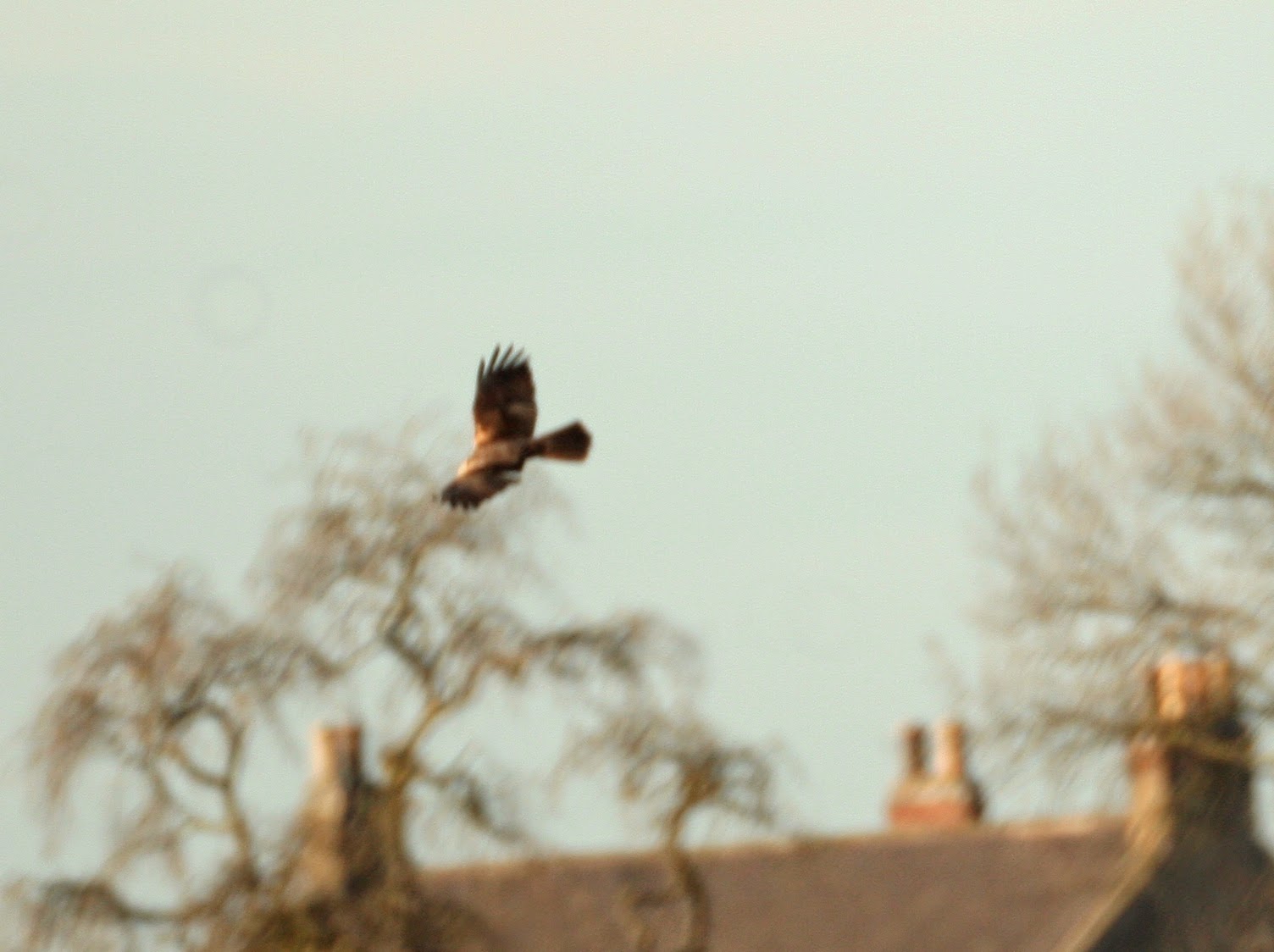 |
| Marsh Harrier (Circus aeruginosus) |
 |
| Marsh Harrier resting on a post |
Hey everyone,
 |
| Up and hunting |
 |
| Searching the reeds |
 |
| Circling over Wheldrake |
I've really enjoyed doing my blog and I've been so amazed at all the great people that are so kind and really encouraging. Thank you to anyone who's read a post, retweeted me or commented on a post.
So Day 100 deserved something special so I saved my first raptor post until today. I decided to cover the Marsh Harrier as I see them quite often and they are such a lovely bird to watch.
I've seen them quite often in Norfolk but the two in these pictures are from Yorkshire, one at Wheldrake Ings and the other form Blacktoft Sands.
So I did some research on these magnificent birds and here's a few things I found out:
- They have a couple of local or country names including Duck Hawk and Moor Buzzard.
- Marsh Harriers are the largest and broadest winged of the harriers. They are 52cm long with 122cm wingspan.
- Males weigh 540g and females 670g. Other differences are that males and females have different colourings - males wings are more grey with black tips, they have brown backs and gingery bellies. Females are chocolate brown with a golden crown and throat.
- There are between 320-380 breeding pairs in the UK. This is pretty impressive as they were on the verge of extinction in the UK in the late 19th Century. They have since made a good comeback especially in Norfolk.
- They are currently an Amber list species.
- They are discernible from other Harriers by their larger size, bulkier build, broader wings and lack of white on the rear.
- Other things to look out for are its long tail and the distinctive shallow v of their wings in flight.
- I like their flight pattern which goes flap-flap-glide.
- Marsh Harriers are quite slow fliers and can remain in the air at speeds of less than 20mph.
- During courting males try to impress females with acrobatic flight displays. Sometimes during these displays they will lock talons.
- When breeding females do the incubation and tending of the young while the males take responsibility for hunting and providing food.
- Another impressive feat in flight is the food passes when the male gives the female the food he has caught. The females rise up toward the male and turns upside down nearly to catch prey dropped by the male. It's a great sight and sometimes quite funny when they are inexperienced, I've seen some spectacular failed passes!
 |
| Starting the flap flap glide sequence |
 |
| Marsh Harrier chased by crow while another crow watches Buzzards eating |
- They live mainly in marshes and reed beds
- Their diet consists of small mammals and birds, they like prey that is easy to catch so will also take amphibians and insects.
I love these birds and really enjoyed finding out more about them. I hope you like them too and there are plenty of sites where you can find out more, here's a few I found.
Hope you enjoyed and are looking forward to my next 100 posts :-),
Z.
Great post Zach, Marsh Harriers are brilliant birds!
ReplyDeleteAwesome blog post Zach , lots of great facts and photos , congrats on your 100th blog post 😊
ReplyDeleteThanks Ellis, thanks Rob, love marsh harriers and glad to have reached my 100th post - planning now for the next 100 :-)
ReplyDelete